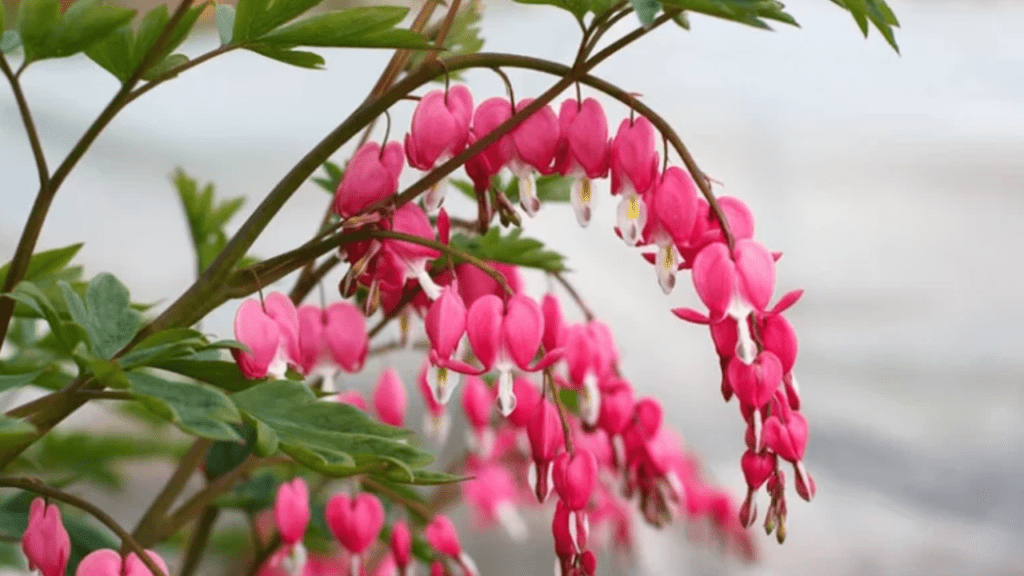
How to Grow and Care for Lamprocapnos Spectabilis: A Gardener’s Guide
Are you a gardening enthusiast looking to add a touch of beauty to your garden with Lamprocapnos Spectabilis, also known as bleeding heart flowers? Look no further, because in this comprehensive guide, we’ll provide you with all the information you need to successfully grow and care for these stunning flowers. From the best growing conditions to proper care and maintenance, we’ve got you covered. So, if you’re ready to take your gardening game to the next level, keep reading for all the tips and tricks you need to know.
Table of Contents
ToggleWhat is Lamprocapnos Spectabilis?
Lamprocapnos Spectabilis, commonly known as bleeding heart flowers, is a stunning perennial plant that produces heart-shaped flowers in shades of pink, red, and white. These delicate and unique flowers are a favorite among gardeners for their beauty and charm. They thrive in shady areas and are perfect for adding a pop of color to your garden.
When it comes to growing and caring for Lamprocapnos Spectabilis, there are a few key factors to keep in mind. First, these flowers prefer moist, well-drained soil and partial to full shade. It’s important to water them regularly, especially during dry periods, to ensure they stay healthy and vibrant. Additionally, adding a layer of mulch around the base of the plant can help retain moisture and keep the soil cool.
In terms of maintenance, it’s important to deadhead the flowers once they have finished blooming to encourage new growth. It’s also a good idea to divide the plants every few years to prevent overcrowding and promote better flowering.
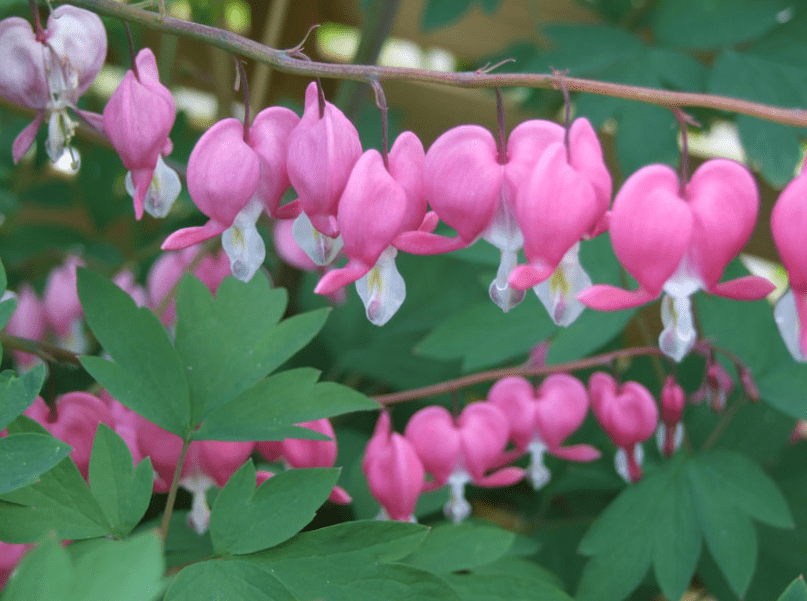
By following these tips and providing the proper care, you can enjoy the beauty of Lamprocapnos Spectabilis in your garden for years to come. So, if you’re ready to enhance your garden with these stunning flowers, now is the perfect time to get started. Happy gardening!
Popular Varieties of Lamprocapnos Spectabilis
Overview of the most popular varieties of Lamprocapnos Spectabilis.
Lamprocapnos Spectabilis, also known as Bleeding Heart, is a beautiful and popular choice for gardens. There are several popular varieties of this plant, including the traditional pink, white, and red varieties. Each variety has its own unique charm and beauty, making them a versatile and stunning addition to any garden. These plants thrive in partial shade and well-drained soil, making them a great choice for gardeners looking for low-maintenance and visually appealing plants. With their heart-shaped flowers and delicate foliage, Lamprocapnos Spectabilis adds a touch of elegance and charm to any garden. Whether you choose the traditional pink variety or opt for the unique white or red varieties, these plants are sure to add a pop of color and interest to your outdoor space. So, if you’re looking to enhance your garden with these stunning flowers, now is the perfect time to start planning and planting. With the right care and attention, you can enjoy the beauty of Lamprocapnos Spectabilis in your garden for years to come. Happy gardening!
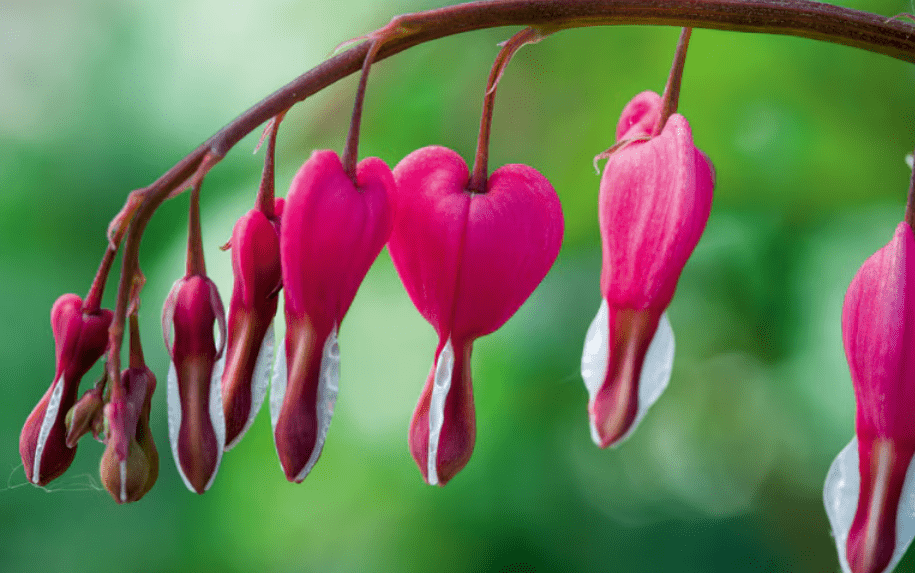
Growing Conditions for Lamprocapnos Spectabilis
Ideal soil types, pH levels, and drainage needs.
When it comes to growing Lamprocapnos Spectabilis, it’s important to consider the ideal soil types, pH levels, and drainage needs. These plants thrive in well-drained soil and prefer a slightly acidic to neutral pH level. It’s important to avoid waterlogged soil, as this can lead to root rot and other issues. A loamy soil with good drainage is ideal for these plants. When planting, be sure to amend the soil with organic matter to improve its texture and drainage. Additionally, it’s important to water these plants regularly, but be sure not to overwater them. Providing the right growing conditions will ensure that your Lamprocapnos Spectabilis plants thrive and continue to add beauty to your garden for years to come. So, take the time to prepare the right soil and provide the proper care, and you’ll be able to enjoy the stunning flowers of Lamprocapnos Spectabilis in your garden for many seasons. Happy gardening!
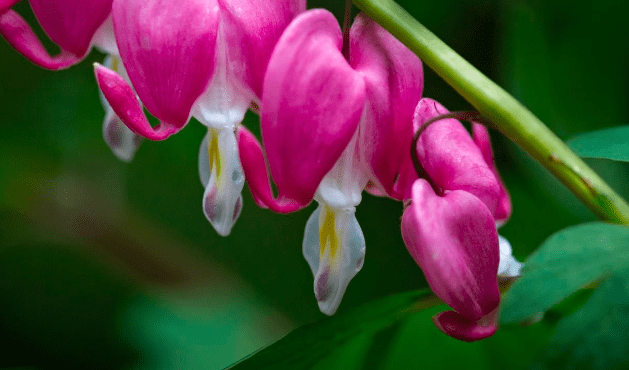
Sunlight and shade preferences.
When it comes to sunlight and shade preferences, it’s important to consider the specific needs of the plants you are growing. Some plants thrive in full sunlight, while others prefer partial shade. It’s crucial to research the sunlight and shade preferences of the plants you are growing and provide them with the appropriate conditions for their optimal growth. By taking the time to understand and cater to the sunlight and shade preferences of your plants, you can ensure that they thrive and flourish in your garden. So, whether it’s full sun, partial shade, or somewhere in between, make sure to provide your plants with the sunlight and shade conditions that they prefer. Your efforts will be rewarded with healthy, vibrant, and beautiful plants.
Temperature and climate considerations for optimal growth.
When it comes to the growth of your plants, temperature and climate considerations are crucial. Different plants have different temperature and climate preferences, so it’s important to research and understand the specific needs of the plants you are growing. Some plants thrive in hot, tropical climates, while others prefer cooler temperatures. By providing your plants with the right temperature and climate conditions, you can ensure that they grow and flourish to their full potential. Whether it’s providing extra warmth for tropical plants or protecting cold-sensitive plants from frost, taking the time to consider the temperature and climate needs of your plants will result in healthy, thriving foliage. So, make sure to research and cater to the temperature and climate preferences of your plants to create an optimal growing environment for them. Your efforts will be rewarded with beautiful, flourishing greenery in your garden.
Watering, fertilizing, and feeding requirements.
When it comes to the growth of your plants, it’s important to pay attention to their watering, fertilizing, and feeding requirements. Different plants have different needs when it comes to these factors, so taking the time to understand and cater to those needs is crucial for their health and growth. Watering your plants at the right time and with the right amount of water is essential for their survival. Some plants may require more frequent watering, while others may need less. Fertilizing your plants is also important to provide them with the necessary nutrients for healthy growth. Make sure to research the specific fertilizing needs of your plants and follow the recommended feeding schedule. By providing your plants with the right amount of water, the necessary nutrients, and proper feeding, you can ensure that they grow and thrive to their full potential. So, take the time to understand the watering, fertilizing, and feeding requirements of your plants and give them the care and attention they need to flourish. Your efforts will be rewarded with beautiful, healthy plants that will enhance the beauty of your garden.
Care and Maintenance of Lamprocapnos Spectabilis
Seasonal care guide for Lamprocapnos Spectabilis (pruning, deadheading, fertilizing).
Lamprocapnos Spectabilis, also known as Bleeding Heart, is a beautiful and delicate plant that requires specific care and attention. It is important to understand the seasonal care guide for this plant in order to ensure its healthy growth and blooming. When it comes to pruning, it is important to remove any dead or yellowing leaves to promote new growth. Deadheading the plant by removing faded flowers will encourage continued blooming throughout the season. Fertilizing is also crucial for the optimal growth of Lamprocapnos Spectabilis. Use a balanced fertilizer in early spring to provide the necessary nutrients for healthy growth. Throughout the growing season, continue to fertilize every 4-6 weeks to support the plant’s blooming and overall health. By following these seasonal care guidelines, you can ensure that your Lamprocapnos Spectabilis will thrive and bring vibrant beauty to your garden. So, put in the effort to provide the necessary care and maintenance for this plant, and you will be rewarded with stunning, flourishing blooms.
Pest and disease prevention strategies.
When it comes to maintaining the health and vibrancy of your plants, pest and disease prevention strategies are essential. One important strategy is to regularly inspect your plants for any signs of pests or disease. By catching and addressing issues early, you can prevent them from spreading and causing significant damage to your plants. Another crucial step in pest and disease prevention is to maintain good soil and plant hygiene. This includes removing any dead or diseased plant material, as well as keeping the area around your plants free of weeds and debris that can attract pests and disease. Additionally, using natural or organic pest control methods, such as introducing beneficial insects or using insecticidal soaps, can help to keep pests at bay without harming the environment. By implementing these strategies, you can ensure that your plants stay healthy and thriving, allowing you to enjoy their beauty and benefits for years to come. So, take the time to incorporate pest and disease prevention into your plant care routine, and you will be rewarded with a flourishing and vibrant garden.
Managing common issues such as root rot, aphids, and slugs.
One important strategy in managing common issues such as root rot, aphids, and slugs is to regularly inspect your plants for any signs of pests or disease. By catching and addressing issues early, you can prevent them from spreading and causing significant damage to your plants. It’s crucial to stay proactive and vigilant in maintaining the health of your plants.
Another crucial step in pest and disease prevention is to maintain good soil and plant hygiene. This includes removing any dead or diseased plant material, as well as keeping the area around your plants free of weeds and debris that can attract pests and disease. By keeping your garden clean and free of potential threats, you can create a healthier environment for your plants to thrive in.
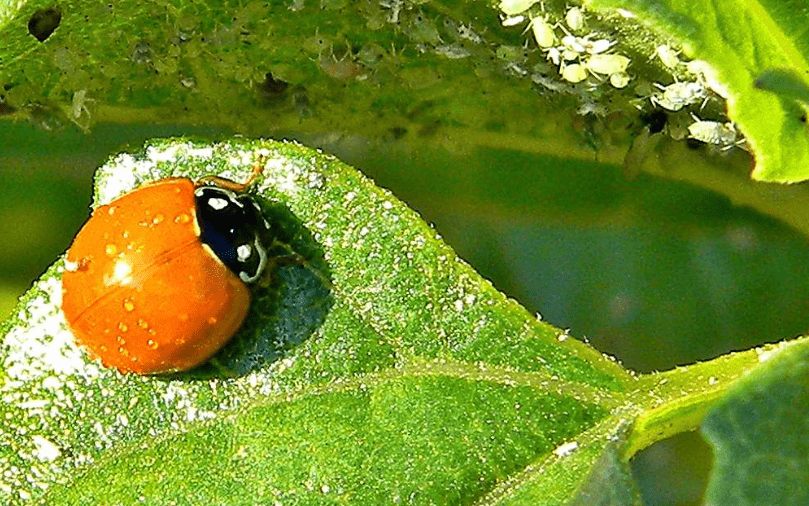
Additionally, using natural or organic pest control methods can also help to keep pests at bay without harming the environment. This can include introducing beneficial insects or using insecticidal soaps. By utilizing these methods, you can effectively manage common issues without resorting to harmful chemicals that can have negative impacts on the ecosystem.
By implementing these strategies, you can ensure that your plants stay healthy and vibrant, allowing you to enjoy their beauty and benefits for years to come. So, take the time to incorporate pest and disease prevention into your plant care routine, and you will be rewarded with a flourishing and thriving garden. Your plants will thank you for the care and attention you give them, and you’ll be able to enjoy a beautiful and bountiful garden for years to come.
How to extend the blooming period and maintain the health of the plant.
One of the best ways to extend the blooming period and maintain the health of your plants is by taking proactive measures to prevent pests and diseases. By keeping your garden clean and free of potential threats, you can create a healthier environment for your plants to thrive in. Additionally, using natural or organic pest control methods can also help to keep pests at bay without harming the environment. This can include introducing beneficial insects or using insecticidal soaps. By utilizing these methods, you can effectively manage common issues without resorting to harmful chemicals that can have negative impacts on the ecosystem.
In addition to pest and disease prevention, proper watering and fertilizing can also play a crucial role in extending the blooming period of your plants. By providing the right amount of water and nutrients, you can ensure that your plants have the resources they need to continue blooming and growing strong. You can also consider deadheading or pruning your plants to encourage new growth and prolong the blooming period.
By implementing these strategies, you can ensure that your plants stay healthy and vibrant, allowing you to enjoy their beauty and benefits for years to come. So, take the time to incorporate pest and disease prevention into your plant care routine, and you will be rewarded with a flourishing and thriving garden. Your plants will thank you for the care and attention you give them, and you’ll be able to enjoy a beautiful and bountiful garden for years to come.
Landscaping with Lamprocapnos Spectabilis
Is a great way to add beauty and charm to your outdoor space. These beautiful heart-shaped flowers are perfect for adding a touch of romance to your garden. By incorporating Lamprocapnos Spectabilis into your landscaping, you can create a stunning display that will impress your friends and neighbors.
In addition to their beauty, Lamprocapnos Spectabilis is also easy to care for. With the right maintenance and care, you can enjoy these lovely flowers for years to come. By utilizing proper watering, fertilizing, and pest prevention methods, you can ensure that your Lamprocapnos Spectabilis plants remain healthy and vibrant.
By implementing these strategies, you can create a lush and beautiful garden that will be the envy of the neighborhood. So, take the time to incorporate Lamprocapnos Spectabilis into your landscaping, and you will be rewarded with a stunning and picturesque outdoor space. Your efforts will not only benefit your own enjoyment, but they will also contribute to the overall beauty of your community. Let’s work together to create a more vibrant and beautiful environment for everyone to enjoy.
Propagating Lamprocapnos Spectabilis
Methods of propagation: division and cuttings.
Propagation is an important aspect of gardening, and there are several methods that can be used to propagate Lamprocapnos Spectabilis. Division is a common and effective method of propagation for this plant. By dividing the root clumps of established plants, you can create new plants that will continue to thrive in your garden. This is a simple and reliable way to increase the number of Lamprocapnos Spectabilis plants in your garden.
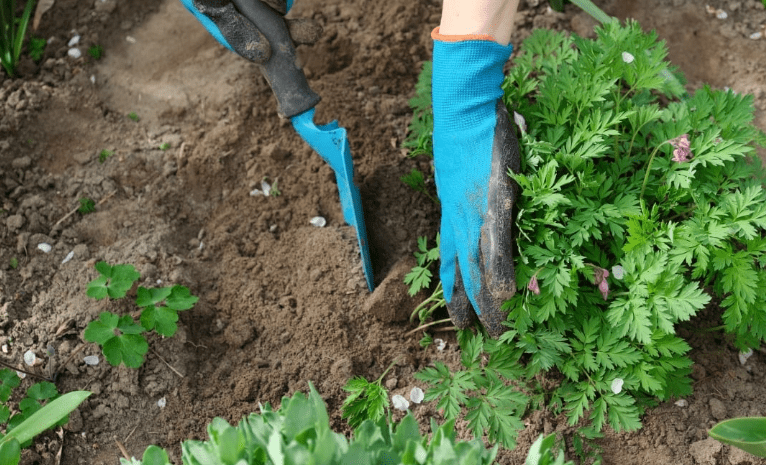
Another method of propagation is through cuttings. By taking stem cuttings from healthy, established plants, you can create new plants that will be genetically identical to the parent plant. This is a great way to ensure that you can continue to enjoy the same beautiful flowers year after year. With the right care and attention, these cuttings will take root and grow into healthy, vibrant plants.
By utilizing these methods of propagation, you can expand your garden and create a stunning display of Lamprocapnos Spectabilis. Whether you choose to divide established plants or take cuttings, you can ensure that your garden will be filled with these lovely flowers for years to come. So, take the time to propagate Lamprocapnos Spectabilis and create a garden that will be the envy of all who see it.
Step-by-step guide to propagating Lamprocapnos Spectabilis at home.
First, choose a healthy and established plant to take cuttings from. Make sure the plant is well-watered and in good condition. Next, take a sharp, clean pair of scissors or pruning shears and cut a 4-6 inch stem from the parent plant. Remove any leaves from the bottom inch of the cutting. You can also dip the cut end in rooting hormone to promote root growth.
Then, prepare a small pot with well-draining soil and place the cutting in the soil, making sure to water it thoroughly. Cover the pot with a plastic bag to create a mini greenhouse effect and place it in a warm, bright location. Keep the soil consistently moist and within a few weeks, you should start to see new growth indicating that the cutting has successfully rooted.
Once the cutting has established roots, you can transplant it into a larger pot or directly into your garden. With the right care and attention, your new plant will grow and flourish, providing you with beautiful flowers for years to come.
By following these simple steps, you can propagate Lamprocapnos Spectabilis at home and expand your garden with these stunning flowers. It’s a rewarding and cost-effective way to create a beautiful garden that will bring joy for years to come. So, don’t hesitate to give it a try and enjoy the beauty of Lamprocapnos Spectabilis in your own garden.
Benefits of Growing Lamprocapnos Spectabilis
Aesthetic benefits of Lamprocapnos Spectabilis in your garden.
Lamprocapnos Spectabilis, also known as bleeding heart, is a beautiful and unique addition to any garden. Its heart-shaped flowers and delicate foliage add a touch of elegance and charm to any landscape. By propagating this plant at home, you can easily expand your garden and enjoy the aesthetic benefits of this stunning flower. With just a few simple steps, you can propagate Lamprocapnos Spectabilis and watch it grow and flourish in your garden for years to come. Not only is it a rewarding and fulfilling experience, but it is also a cost-effective way to enhance the beauty of your outdoor space. So why wait? Take the opportunity to propagate Lamprocapnos Spectabilis and enjoy the aesthetic benefits it brings to your garden. Your landscape will thank you for it.
Attracting pollinators such as hummingbirds and bees.
Lamprocapnos Spectabilis, also known as Bleeding Heart, is a beautiful and elegant flower that can add a touch of charm to any garden. By propagating this plant at home, you have the opportunity to expand your garden and attract pollinators such as hummingbirds and bees. This not only adds to the beauty of your landscape, but also plays a crucial role in supporting the ecosystem. Propagating Lamprocapnos Spectabilis is a simple and rewarding process that can enhance the aesthetic appeal of your outdoor space. Not only will you enjoy the colorful and unique blooms, but you will also have the satisfaction of knowing that you are creating a welcoming environment for pollinators. So don’t miss out on this opportunity to propagate Lamprocapnos Spectabilis and create a thriving and beautiful garden that will attract and support pollinators for years to come.
In conclusion, growing and caring for Lamprocapnos Spectabilis can be a rewarding experience for any gardener. With the right knowledge and care, you can enjoy beautiful blooms and healthy plants in your garden. By following the tips and guidelines provided in this post, you can ensure the success of your bleeding heart flowers and create a stunning addition to your garden. So, if you’re ready to take your gardening skills to the next level, start growing and caring for Lamprocapnos Spectabilis today!
Frequently asked questions And Answer
Lamprocapnos Spectabilis, also known as bleeding heart, is a beautiful and unique flowering plant that is popular in gardens for its heart-shaped flowers and fern-like foliage.
Lamprocapnos Spectabilis prefers partial shade and well-drained soil. Plant it in a location with morning sun and afternoon shade. Keep the soil consistently moist, but not waterlogged.
The best time to plant Lamprocapnos Spectabilis is in the early spring, as soon as the ground is workable.
Keep the soil consistently moist, especially during hot and dry periods. Mulch around the base of the plant to help retain moisture and suppress weeds. Cut back the foliage after it dies back in the fall.
Yes, Lamprocapnos Spectabilis can be grown in a container, as long as the container has good drainage and is large enough to accommodate the plant’s root system.
Lamprocapnos Spectabilis can be propagated by division in the spring or fall. Simply dig up the plant, divide the root ball into smaller sections, and replant them in the garden or in containers.
Lamprocapnos Spectabilis is relatively pest and disease resistant, but it can be susceptible to aphids and slugs. Keep an eye out for these pests and treat them accordingly.
To promote healthy growth and vibrant flowers, fertilize Lamprocapnos Spectabilis with a balanced, slow-release fertilizer in the spring. Deadhead spent flowers to encourage continuous blooming throughout the season.
